BMW E36 328i
'M52' Tuning Guide
Stuck in the 90s? We sure are..
The BMW E36 is one of our favourites.. we run a number of 328i's as track cars & project vehicles. If you are looking to tune yours, we gotcha..
Based in Manchester, UK
We are able to help with most types of upgrade, including hardware (cams, throttle bodies, turbos etc) and software.. We have a deep understanding of the factory ECUs, such as Siemens MS41.
Online Guide
We've put this guide together to point owners in the right direction of what works, and what doesn't. As well as this, hopefully this guide will help dispell some of the 'internet myth' around tuning these cars!
Check us out on the dyno on YouTube.
Or have a look at what Services we offer, and how we can help tune your car!
'Stage 1' - Tuning a stock car.
Estimated Power, 200-205hp
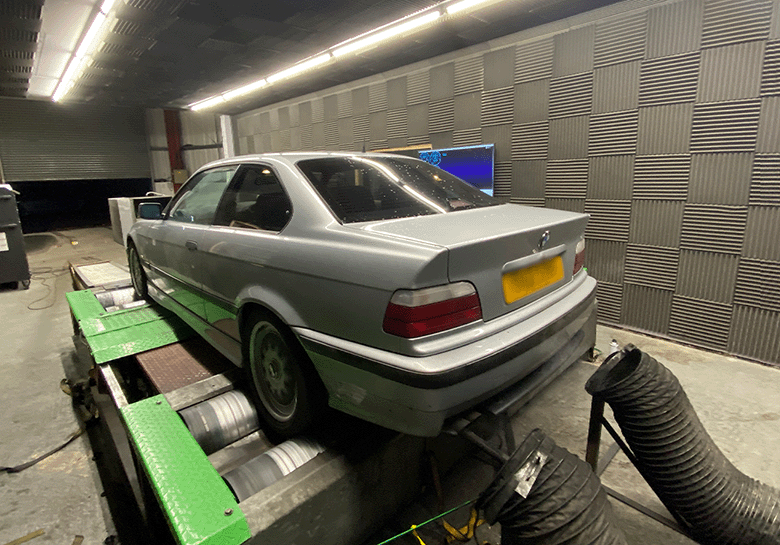
A couple of HP, and some bottom end torque.
There's not a huge amount to gain on a stock car; BMW did a pretty good job with the M52 engine; so peak power gains are fairly minimal. Fixing the fuelling, and allowing a bit more ignition timing (for modern high octane fuels) usually allows 5-10hp gain as a peak number...
Where we can see a decent gain however, is at the bottom end. The stock mapping runs stoichiometric (14.7:1) AFR up to about 4000rpm; which hurts performance low down. Adjusting this will hurt economy a bit; but usually picks up a solid 15-20lbft.
As can be seen from the dyno plot; we gain a little bit, everywhere with mapping optimisation. However, the biggest (and most usable) gains come at low RPM.
Stock car, vs Stage 1 Tuning
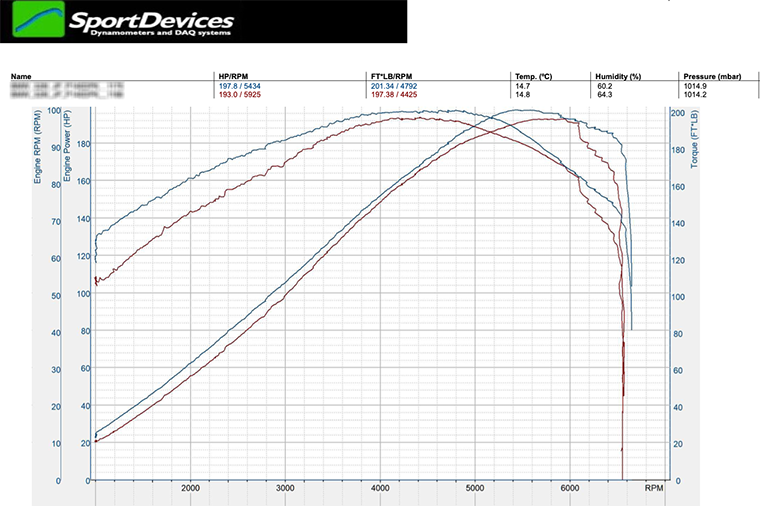
'Stage 2' - Basic Bolt ons.
Estimated Power, 225-235hp
More High RPM Power
Using the older inlet manifold from an 'M50' 325i is a good mod to increase airflow at high RPM. This will usually give you another 15-20hp peak.. however, you can't have your cake and eat it.. the bigger manifold will reduce low RPM gas speed and hurt bottom end power a bit. Usually, when mapped properly, this loss is minimal.
The M52 engine is very sensitive to exhaust changes; and if you aren't careful you can easily make things worse than better.. An exhaust manifold from an E36 M3 (S50) usually picks up about 5hp at the peak; but does often give a strong negative pressure wave at around 2000rpm, which causes a bit of a dip in the power.
Again, the dyno plot tells the story here. We gain a lot over 5000rpm; where the standard intake strangles the engine. Couple with a tune, this is where most people stop, as the bang for buck gets less and less from this point.
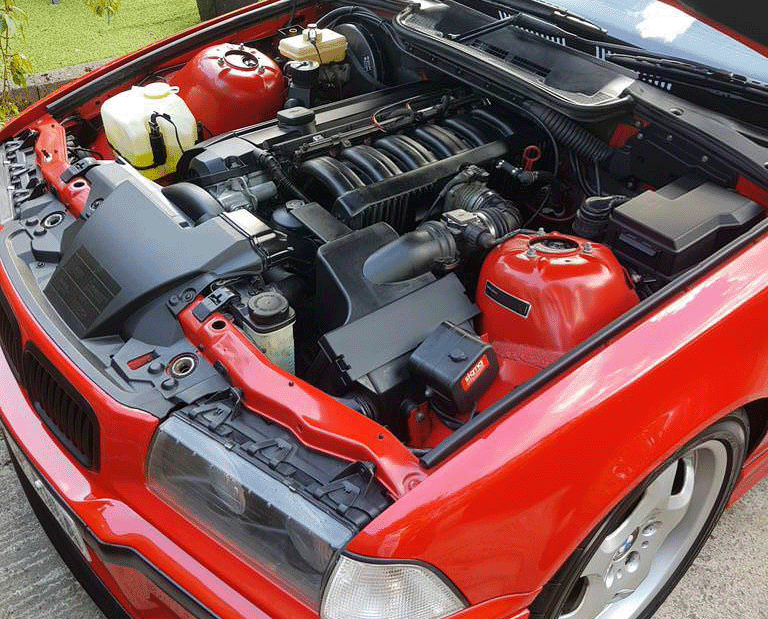
Stage 1 tune, vs M50 manifold, exhaust and map
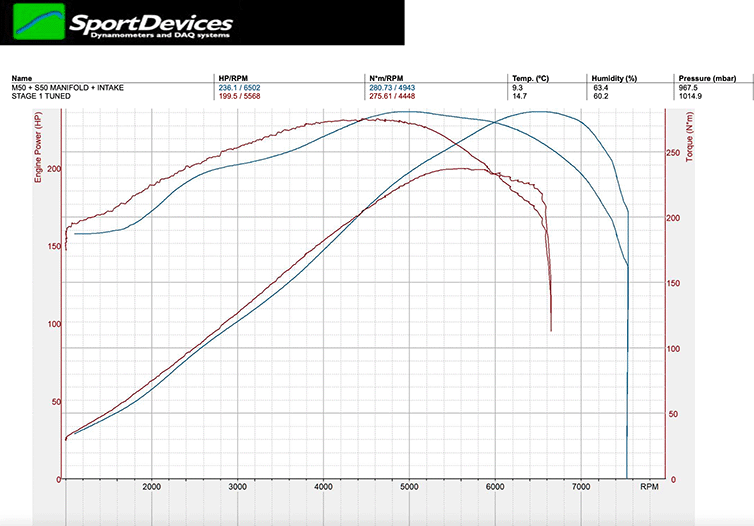
Next step, Camshafts
Estimated Power, 250-260hp
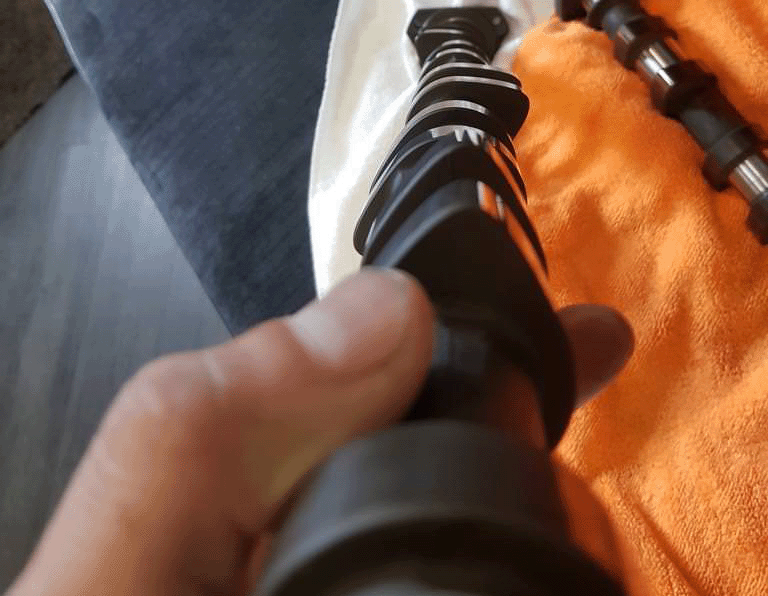
More top end power; and more RPM.
Swapping camshafts requires a bit of knowledge and some special tools; but it's well worth it. We used to use the 'American M3' or 'S52' camshafts as they were cheap, but these days they aren't much cheaper than the likes of Schrick or CatCams.
With the stock camshafts having 228° duration, and only 9mm of lift on both the intake and exhaust, they are pretty small. The 'S52' spec is 252° with 10.2mm lift on the intake, and 244° with 9.5mm on the exhaust. This is about the biggest it's worth going without throttle bodies; as much further the idle quality will suffer for minimal gains.
This dyno plot shows the same car, before and after fitting S52 cams. The top end power really wakes up and we can hang onto the power much longer as the power doesn't drop off. 7300rpm is about as far as we like to go...
Same car, with before and after S52 cams
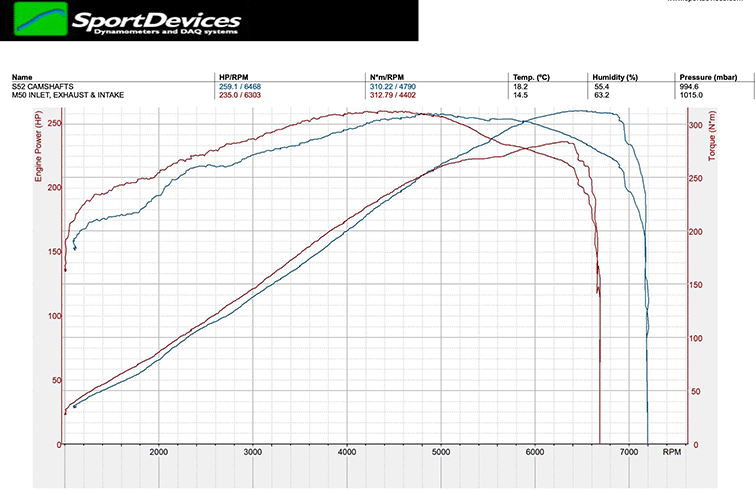
Individual Throttle Bodies
Estimated Power, 270-280hp
More power, everywhere... (almost).
Fitting throttle bodies to your M52B28 isn't easy, it's why we offer a 'drive in, drive out' package.. but it will allow you to take your 328i to the next level!
Fitting throttle bodies is a simple matter of getting as much air into the engine as possible.. in addition, not having a plenum allows you to get away with a much wilder cam profile, or more aggressive cam timing without upsetting the idle.. as part of our package, we always time up the cams for best power..
You can see from the dyno plot there really is no loss anywhere in the curve, with the gains growing with more RPM. With some stiffer valve springs, bigger cams again, and mechanical lifters you can go even further..
It's really amusing when you overlay a 'Stage 1' car, with a fully kitted out throttle body setup, as can be seen in the other dyno plot!
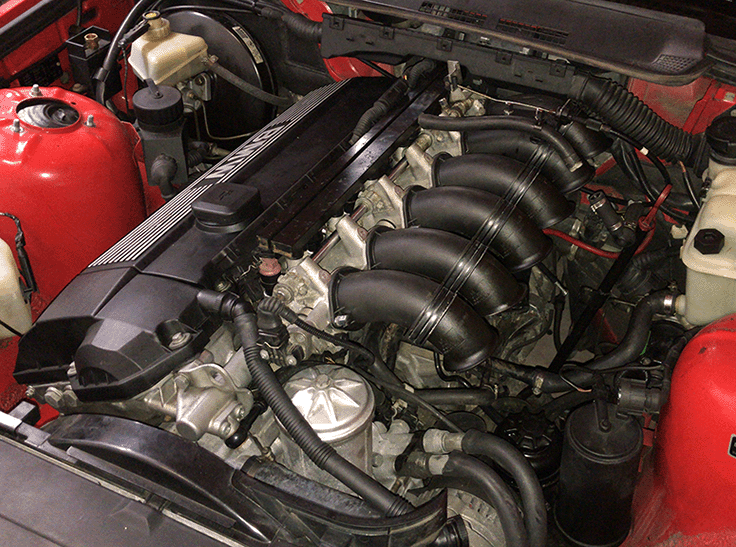
With and without throttle bodies, same car
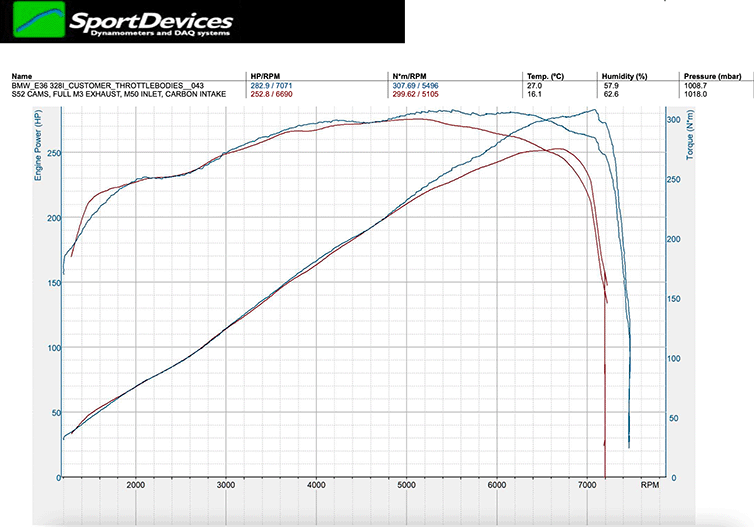
Stock car, vs Throttle bodies, cams, exhaust
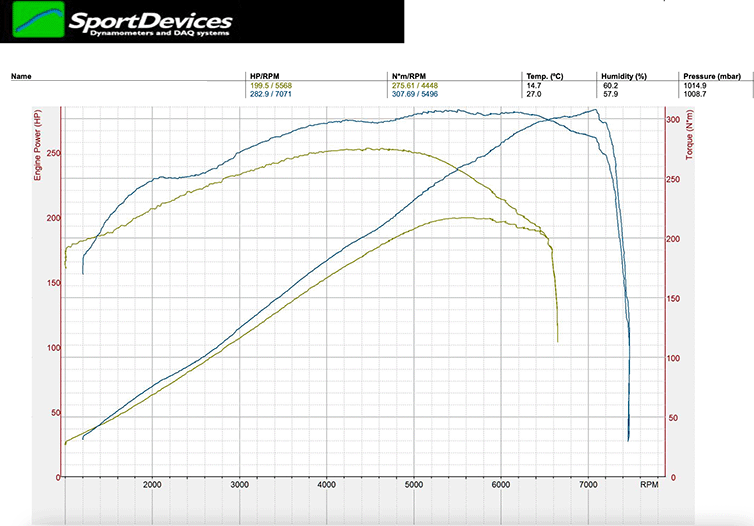
E36 328i with Throttlebodies on the dyno.
Stroker Conversions
3.0, 3.2, 3.3, 3.4l capacity
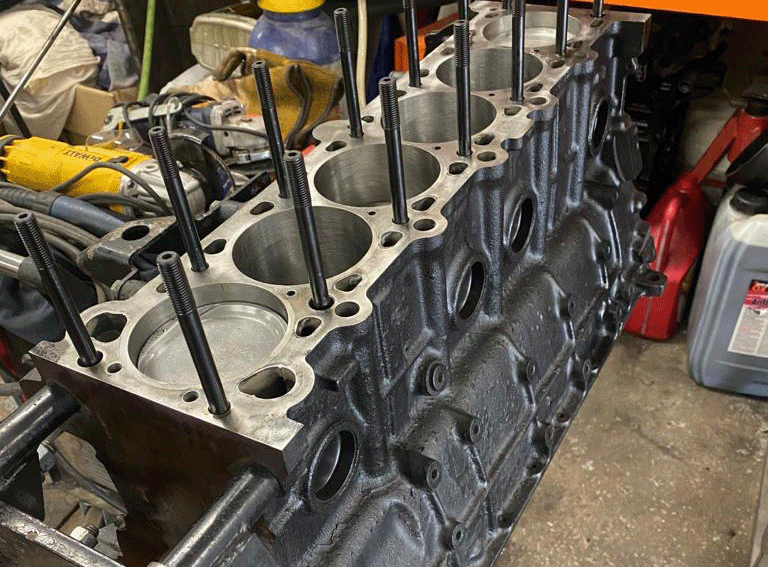
More Bigger = More Better.
It doesn't take a genius to work out that a bigger engine gives more power... The next logical step to pushing more power from your M52 (or M54!) is to either go bigger capacity
It's fairly easy to grab yourself an E46 330i engine (M54B30 for the engine nerds), rob the rotating assembly; crank, rods, pistons and build yourself a frankenstein hybrid by fitting this assembly into your M52 block, using your stock head, ancillaries to effectively build a single VANOS M52B30.
The other option is to go bigger. You could use something like a USA spec 'M3' rotating assembly (to effecively build an M52B32), or as we have done with a couple of our cars one of the many Alpina cranks for 3.2, 3.3 or 3.4l capacity!
This dyno plot shows the same car, before (with 2.8l, cams etc) and after (3.3l stroker, but stock cams). The torque gain in the mid range is huge, making 40lbft+ more, basically everywhere. The top end power is up by 30hp+... but this car went on to make well over 300hp after the cams were refitted!
Same car, 2.8l with cams vs 3.3l stock cams
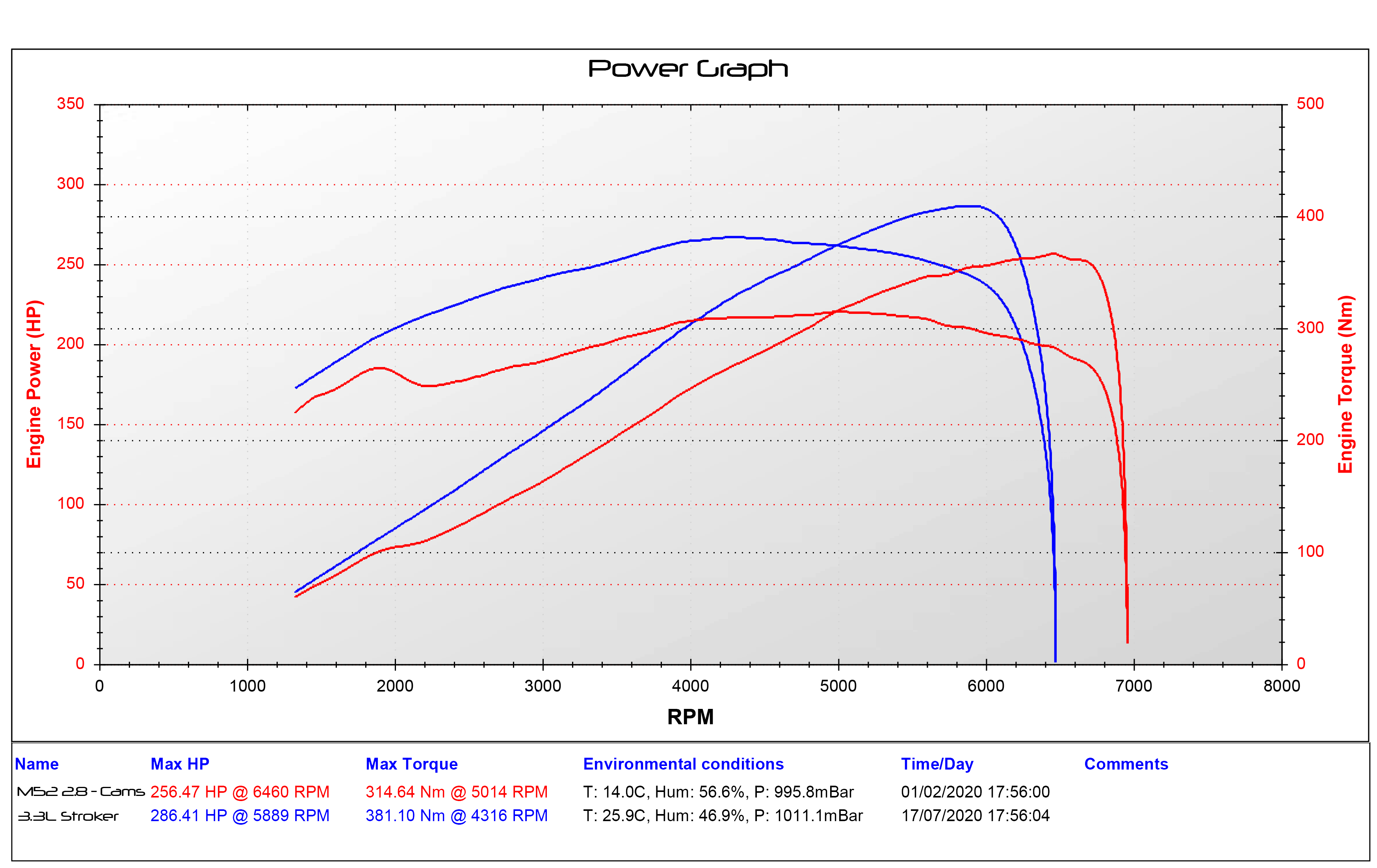
Turbocharging
Turbo or Supercharger.. for those who 'wanna go fast.
Just add boost.
Low Boost
This setup is designed to work on a stock, unopened engine. The limitation here is compression, and thus detonation. We are limited to about 0.5bar (7psi) of boost, which on an M52B28 equates to around 300-340hp. Obviously, you can push further, but there are risks... Race fuels, methanol, or engine work are required for reliability.
High Boost
This level of power realistically requires the compression to be dropped a bit, with either forged pistons or some kind of thicker gasket (such as Cometic), or spacer plate. What this does allow, is more boost. Usually, 1.0bar (15psi) is pretty safe on a stock bottom end, with the compression dropped and 400hp. In some cases, we've seen 420/440hp on a stock M52B28 at 1.2bar (18psi).
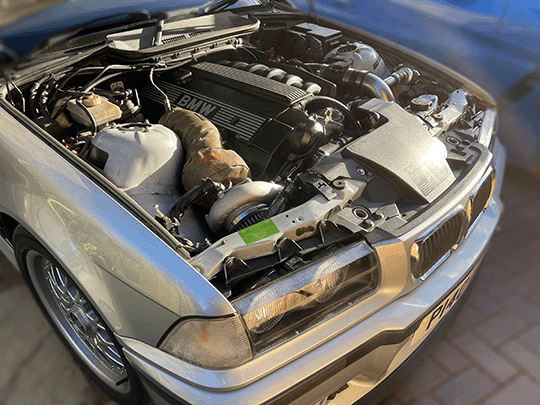
3.3l stroker, with GT3582R turbo - low boost 6psi, high boost 10psi
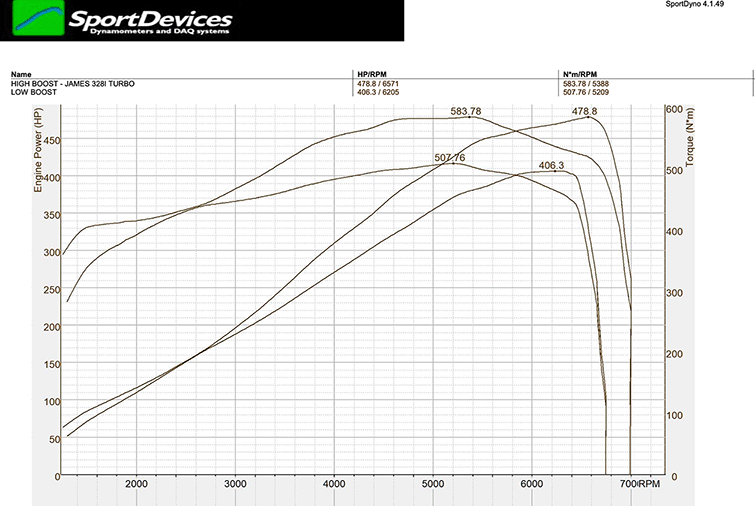
Social Media
We mostly post projects which come through the workshop on Instagram and YouTube... so check us out there @e36jp
Want to know more? Contact us!